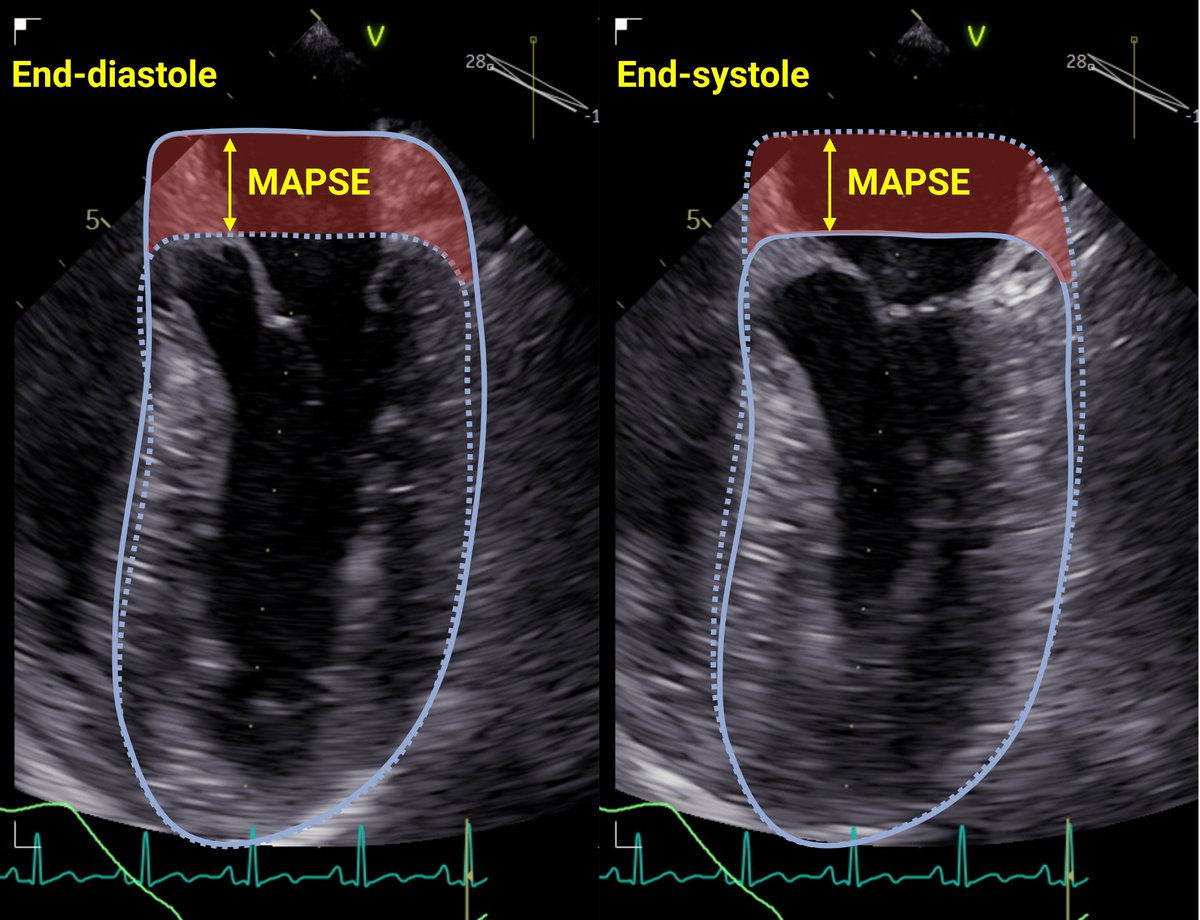The RVOT or PA Doppler has a lot of underutilized potential for hemodynamic monitoring of the RV #ThePeoplesVentricle
🧵On the physiology of the RVOT/PA Doppler. Simplified understandings. Corrections are welcome!😃
#FOAMcc #EchoFirst #Cardiotwitter #FOAMed #Medtwitter #POCUS
🧵On the physiology of the RVOT/PA Doppler. Simplified understandings. Corrections are welcome!😃
#FOAMcc #EchoFirst #Cardiotwitter #FOAMed #Medtwitter #POCUS

VTI reflects stroke volume, but values are much lower than for LVOT. Lower cut-off for 60-79 year olds is actually around 10 cm.
Monitoring changes are likely more useful. doi.org/10.1016/j.jcmg…

Monitoring changes are likely more useful. doi.org/10.1016/j.jcmg…

AcT and Vmax/AT both reflects RV afterload. Increased afterload reduces AT and Vmax/AT.
➡️AcT correlates with mPAP and PVR.
doi.org/10.1161/01.CIR…

➡️AcT correlates with mPAP and PVR.
doi.org/10.1161/01.CIR…

➡️Vmax/AcT detects increased RV afterload with lung inflation.
➡️Vmax/AcT does not change after fluid bolus in fluid responsive patients
➡️Vmax/AcT is improved when PEEP = optimal respiratory compliance doi.org/10.1152/jappl.…
doi.org/10.1097/000005…
doi.org/10.1097/000032…

➡️Vmax/AcT does not change after fluid bolus in fluid responsive patients
➡️Vmax/AcT is improved when PEEP = optimal respiratory compliance doi.org/10.1152/jappl.…
doi.org/10.1097/000005…
doi.org/10.1097/000032…

Notching in the Doppler waveform represents wave reflections from vascular stiffening and the "vascular source" of RV afterload.
➡️For details on waveforms & physiology➡️
➡️DT is a potential quantitative metric of wave reflections doi.org/10.1164/rccm.2…
doi.org/10.1016/j.jcmg…

➡️For details on waveforms & physiology➡️
➡️DT is a potential quantitative metric of wave reflections doi.org/10.1164/rccm.2…
doi.org/10.1016/j.jcmg…

PET reflects the time the RV takes to overcome PA diastolic pressure.
➡️PET is increased in PHT, likely due to RV-PA uncoupling
➡️PET correlates well with RVFAC
➡️PET increases during mechanical inspiration doi.org/10.1161/01.CIR…
doi.org/10.1093/ejecho…
doi.org/10.1016/1053-0…

➡️PET is increased in PHT, likely due to RV-PA uncoupling
➡️PET correlates well with RVFAC
➡️PET increases during mechanical inspiration doi.org/10.1161/01.CIR…
doi.org/10.1093/ejecho…
doi.org/10.1016/1053-0…

ET reflects the ratio of displacement/velocity of fiber shortening - at least for the LV
➡️ET is decreased in PHT
➡️ET does not ⬆️after fluids, but decreases during inspiration in fluid responsive patients. doi.org/10.1161/01.CIR…
doi.org/10.1161/01.CIR…
doi.org/10.1097/000005…

➡️ET is decreased in PHT
➡️ET does not ⬆️after fluids, but decreases during inspiration in fluid responsive patients. doi.org/10.1161/01.CIR…
doi.org/10.1161/01.CIR…
doi.org/10.1097/000005…

(PET+ET) reflects inotropic state (at least for the LV. )
➡️(PET+ET) is correlated with RVFAC; better than PET alone
➡️(PET+ET) is also increased for RV volume overloaded ASD patients doi.org/10.1161/01.CIR…
doi.org/10.1093/ejecho…
doi.org/10.1161/01.CIR…

➡️(PET+ET) is correlated with RVFAC; better than PET alone
➡️(PET+ET) is also increased for RV volume overloaded ASD patients doi.org/10.1161/01.CIR…
doi.org/10.1093/ejecho…
doi.org/10.1161/01.CIR…

Lastly, PET/ET-ratio is also a robust marker for ventricular function (higher ratio is bad).
➡️PET/ET-ratio increases during increased RV afterload from inspiration doi.org/10.1016/1053-0…

➡️PET/ET-ratio increases during increased RV afterload from inspiration doi.org/10.1016/1053-0…

unroll @threadreaderapp
• • •
Missing some Tweet in this thread? You can try to
force a refresh












